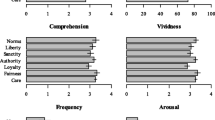Abstract
If a native of India asserts “Killing cattle is wrong” and a Nebraskan asserts “Killing cattle is not wrong”, and both judgments agree with their respective moralities and both moralities are internally consistent, then the moral relativist says both judgments are fully correct. At this point relativism bifurcates. One branch which we call content relativism denies that the two people are contradicting each other. The idea is that the content of a moral judgment is a function of the overall moral point of view from which it proceeds. The second branch which we call truth value relativism affirms that the two judgments are contradictory. Truth value relativism appears to be logically incoherent. How can contradictory judgments be fully correct? For though there will be a sense of correctness in which each judgment is correct — namely by that of being correct relative to the morality relative to which each was expressed — if contradictory, the judgments cannot both be true, and thus cannot both be correct in this most basic sense of correctness. We defend truth value relativism against this sort of charge of logical incoherence by showing it can be accommodated by the existing semantical metatheories of deontic logic. Having done this we go on to argue that truth value relativism is the best version of relativism.
Similar content being viewed by others
Author information
Authors and Affiliations
Rights and permissions
About this article
Cite this article
Hugly, P., Sayward, C. Moral relativism and deontic logic. Synthese 85, 139–152 (1990). https://doi.org/10.1007/BF00873198
Issue Date:
DOI: https://doi.org/10.1007/BF00873198




